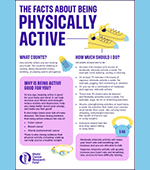 Find out more about womb cancer, including how common it is and ways to reduce your risk.
Find out more about womb cancer, including how common it is and ways to reduce your risk.
Womb cancer, also known as endometrial or uterine cancer, is the fourth most common cancer in women in the UK. In 2019, 10,021 cases of womb cancer were diagnosed*.
The womb is part of a woman’s reproductive system. It’s where the baby grows during pregnancy. The medical term for the womb is uterus.
During a woman’s menstrual cycle, the womb lining thickens in preparation for pregnancy. If pregnancy occurs, the fertilized egg sits on the lining and it’s where the foetus starts to grow. The womb lining itself forms the placenta. If the egg isn’t fertilized, the thick lining is shed during menstruation (monthly periods).
The most common type of womb cancer is found in the cells that line the inside of the womb. This lining of the womb is called the endometrium, so this type of womb cancer is sometimes called endometrial cancer.
Womb cancer is caused by damaged cells, which can grow uncontrollably to form a tumour. Many different factors contribute to the development of womb cancer.
As with all cancers, the risk of developing womb cancer depends on a number of factors and varies from woman to woman.
> Being overweight or obese
– Carrying excess fat around the waist
> Lack of physical activity
 Free physical activity factsheet
Free physical activity factsheetNeed help getting started? Our factsheet has all you need to know about keeping active and practical tips to help you get more active in your everyday life.
If any of these risk factors apply to you, it does not mean that you will develop womb cancer – it just means that your risk may be higher than average. The important thing to remember is that womb cancer is almost always curable if caught at an early stage.
The good news is that there are steps you can take to reduce your risk. These steps are based on research from our Global Cancer Update Programme (CUP Global).
Research shows that being overweight or obese, and carrying extra weight around your waist, increases the risk of womb cancer. Measure your waist and try our BMI calculator to check if you are a healthy weight for your height.
Being physically active uses up extra calories and helps you avoid gaining weight. It also helps keep your hormone levels healthy.
> Try our exercise calorie calculator for ideas on how to be more active
Drinking coffee may decrease the risk of womb cancer, but there are still too many unanswered questions – such as how much you should drink, or how regularly – for us to provide reliable advice on coffee drinking. We also need to be sure that coffee doesn’t have any harmful effects on health.
New research has shown that something called glycaemic load (GL) could have an impact on your risk of womb cancer.
Glycaemic load looks at all the foods and drinks you consume over a day and measures the combined effect on your blood sugar levels.
This is different from glycaemic index (GI), which looks at how individual foods or drinks effect blood sugar levels if consumed on their own.
Scientists think that eating a diet that increases your blood sugar levels could increase your risk of womb cancer.
More research needs to be done on the impact of glycaemic load on cancer risk, but for now we recommend that people enjoy a balanced diet with plenty of plant foods and avoid sugary and processed foods.
> Visit NHS Choices to find out about womb cancer symptoms and treatment